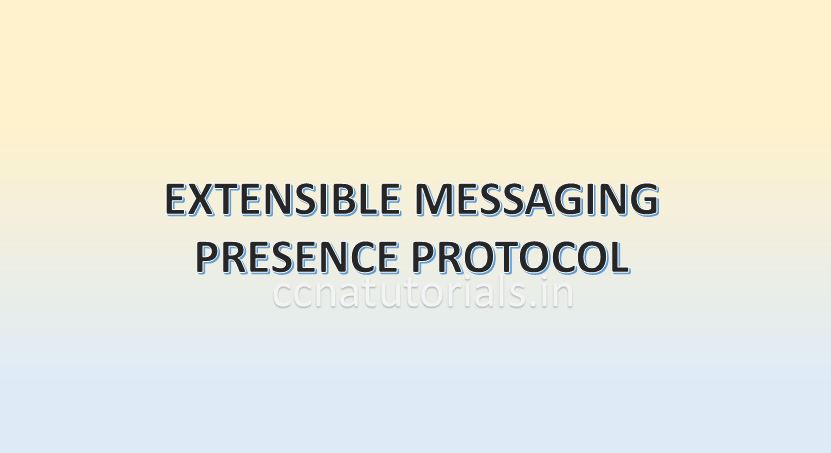In this article i describe the RTP Real Time Transport Protocol in computer networking for CCNA exam. The RTP Real Time Transport Protocol provides the facility to broadcast the transmission of multimedia over the computer network. The RTP Real Time Transport Protocol use unicast and multicast data services in the network to broadcast the multimedia data. Here the multimedia includes the audio and video data for example online video streaming. RTP Real Time Transport Protocol was developed by the IETF to provide the audio video transport for video conferences over the internet. So when you make a video conference with any application on the internet actually you are using the RTP Real Time Transport Protocol in you network.
Real Time Transport Protocol works alongwith RTCP protocol. It is possible to keep an eye on data delivery for large networks by using the RTCP protocol. Here monitoring is done to check the missing or lost data packets during the broadcasting of audio and video. Both protocols RTP and RTCP work together but do not interfere with each other. Both protocols runs on different platforms. RTP runs on UDP by using SIP on the network.
RTP Real Time Transport Protocol in brief
RTP Real Time Transport Protocol allow to manage the real time transmission of audio video data over the computer network by using TCP/IP protocols. RTP porvides the data delivery speedly than TCP communication and ignore of any data loss during the transmission. RTP Real Time Transport Protocol works with RTCP to provide the multiple streams of media synchronisation. The VOIP is the latest technology which use RTP protocol on the internet. The other applications uses the RTP Real Time Transport Protocol are entertainment and conferencing online. The user can see the online videos streaming and also can play online game or conference on internet via using the Real Time Transport Protocol.
Real time Transport Protocol is an application layer protocol belongs to a TCP/IP model suite. Real time Transport Protocol is responsible for transporting audio and video over IP networks. RTP protocol plays main role in communication and entertainment systems. RTP allows data transfer to multiple destinations through IP multicast.

RTP provides the streaming media for online video playing on internet. Real time Transport Protocol manage the real time audio and video data transmission on IP network. Real time Transport Protocol was designed by IETF to support online streaming worldwide on internet. RTP developed by the Audio Video Transport working group of the IETF (Internet Engineering Task Force) standards organisation.
Basic concept of RTP Real time Transport Protocol
RTP real time transport protocol runs over UDP User Datagram Protocol. RTP protocol become useful for VOIP on a network. The RTP is also known as signalling protocol as it transfers the voice over internet. RTP follow up the RTCP protocol. RTP only transfers the media and voice from one client to another. RTCP protocol monitor and check the QoS of the data transferred from one client to another client. Both protocols work independently in a network. Data rebuild according to the header information of RTP.

RTP packets are created at the application layer and handed to the transport layer for delivery. A sequence number is included in header of RTP mechanism. This sequence number detects the lost packet of received data. A frame indication is included in RTP mechanism. The frame indication represents the start and end of each frame. Similarly, source identification denotes the originator of each frame. The design of RTP is based on the architectural principle known as application-layer framing. Real time multimedia streaming applications require timely delivery of information this process is done by using RTP protocol in an IP network.
Function of RTP Real time Transport Protocol
RTP sessions initiated between sender and receiver by using signalling protocols. Signalling protocols may be SIP (Session Initiation Protocol) or Jingle etc. After establishment of session between the sender and receiver the data streaming transmission starts. The data transmits in the form of bits. frame breaks into bits at the transmission computer. Bits received at receiver end are reconstruct frame from bits. The RTP header has minimum size of 12 bytes.

Data transmission is done by using the UDP (User Datagram Protocol). In UDP the data not re transmits from sender because RTP does not specify any action on packet loss. If data lost in the way, then lost data will not re-transmit. This is why sometime online video streaming breaks and when come back the lost video not display again.
RTP provides no guarantee of delivery, but the presence of sequence numbers makes it possible to detect missing packets. IP address of source and destination used for RTP communication. Real time Transport Protocol does not use any fix port. Any group of UDP ports 1024 to 65535 assigned during session establishment. Signalling protocol assign dynamically the port group as per availability at the time of session establishment.
Formats supported by RTP protocol
The codecs used to code and encode the data are defined in the RTP header. Multiple codecs are supported by Real time Transport Protocol. The audio formats supported by RTP are GSM, QCELP, MP3, and DTMF. The video formats supported by RTP are MPEG-1, MPEG-2 AND MPEG-4.
In this article I describe the RTP Real Time Transport Protocol in computer network for CCNA Exam. I hope you found this article helpful. For any query or suggestions you may drop a comment below or contact us. Your suggestions are always welcome by us.







The objective of this document is to explain the configuration of Real-time Transport Protocol (RTP) Parameters on SPA300 and SPA500 Series IP Phones.
The topic is presented very detail and clearly. It is very useful. Thank you very much